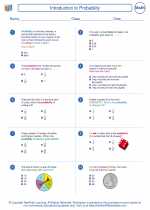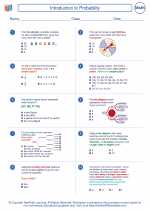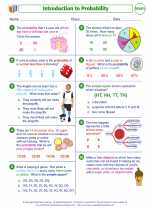Transformation
In mathematics, a transformation refers to the process of changing the position, size, or shape of a figure. There are several types of transformations, including translation, rotation, reflection, and dilation. These transformations are fundamental concepts in geometry and are used to describe the movement and changes of geometric figures. Understanding transformations is essential for various mathematical applications, including geometry, algebra, and calculus.
Types of Transformations:
- Translation: This transformation involves moving a figure from one location to another without changing its size or shape. It is also known as a slide.
- Rotation: Rotation involves turning a figure around a fixed point by a certain angle. The figure remains the same size and shape, but its orientation changes.
- Reflection: Reflection is a transformation that produces a mirror image of a figure across a line, known as the line of reflection.
- Dilation: This transformation involves scaling a figure up or down by a certain factor, without changing its shape.
Properties of Transformations:
Transformations have certain properties that are important to understand:
- Composition: Multiple transformations can be composed or combined to produce a single transformation. The order in which transformations are applied can affect the result.
- Fixed Points: Each type of transformation has specific points that remain unchanged after the transformation. For example, in a rotation, the center of rotation is a fixed point.
- Distance and Angle Preservation: Some transformations preserve distances and angles. For example, in a reflection, the distance between corresponding points on the original and reflected figures remains the same.
Applications of Transformations:
Transformations have various real-world applications, including computer graphics, architecture, engineering, and geography. They are used to model and manipulate objects, analyze spatial relationships, and solve problems related to position and movement.
Study Guide:
To master the topic of transformations, it is important to practice the following:
- Identifying and understanding the properties of each type of transformation.
- Performing and visualizing transformations on geometric figures using coordinates and diagrams.
- Understanding the effects of transformations on the measurements, angles, and orientations of figures.
- Solving problems and applications that involve transformations, such as mapping, design, and spatial reasoning.
By mastering transformations, you will develop a deeper understanding of spatial concepts and be better equipped to solve a wide range of mathematical problems.
.◂Math Worksheets and Study Guides Seventh Grade. Introduction to Probability

 Worksheet/Answer key
Worksheet/Answer key
 Worksheet/Answer key
Worksheet/Answer key
 Worksheet/Answer key
Worksheet/Answer key
 Worksheet/Answer key
Worksheet/Answer key
